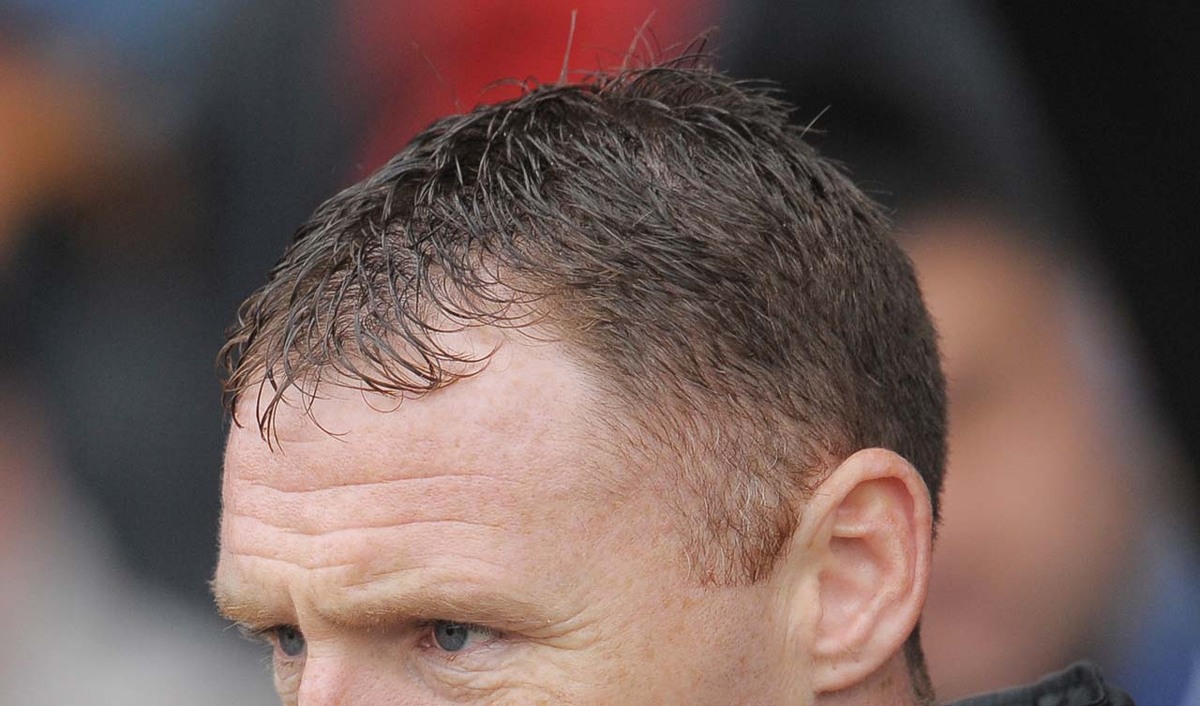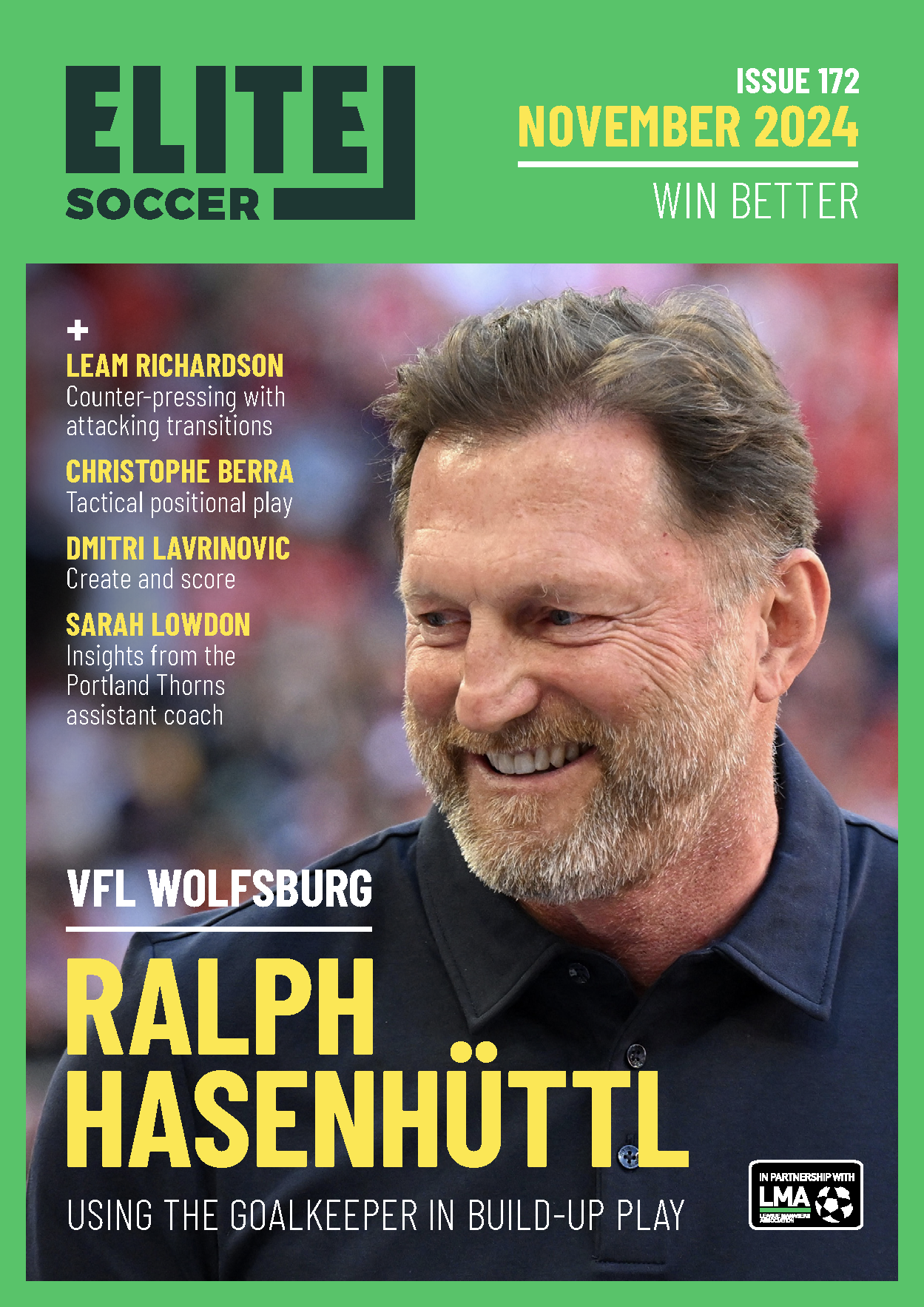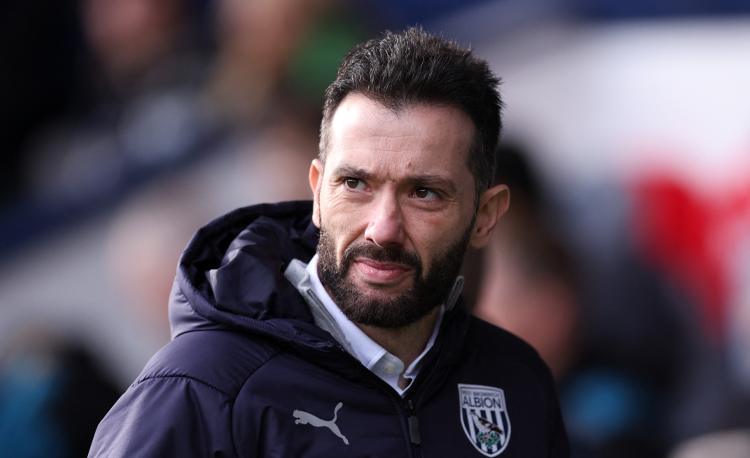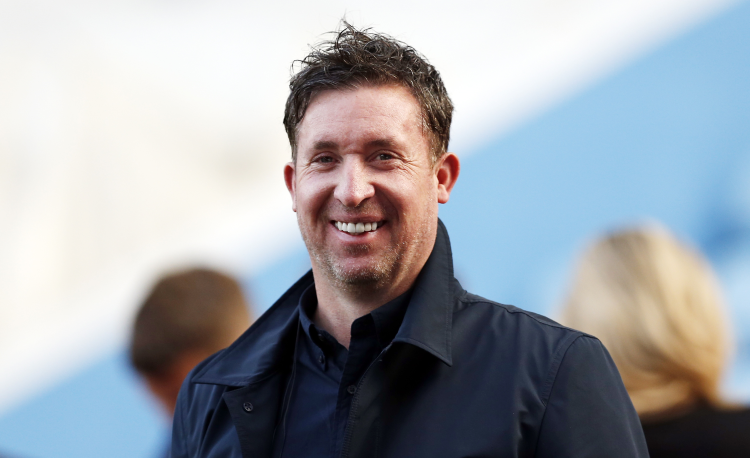You are viewing 1 of your 1 free articles
Attacking overloads
This session is all about transitions, creating overloads and reinforcing the need for quick, ruthless play in the final third. I like it because it is game related and it works to improve on game weaknesses. There is something in this session for every player and it helps teams keep the ball in transition.
| Area | Up to 65x44 yards |
| Equipment | Balls, bibs, cones, 2 goals |
| No. of Players | 19 players + 2 goalkeepers |
| Session Time |
7v7+1: 20mins, Attacking overloads: 20mins |
This session is all about transitions, creating overloads and reinforcing the need for quick, ruthless play in the final third. I like it because it is game related and it works to improve on game weaknesses. There is something in this session for every player and it helps teams keep the ball in transition.
As a by-product, it’s also good for working on defending against overloads and reinforces the need to track runners, reminding the players of their defensive duties.
What do I get the players to do?
7v7+1 with 2 each outside
We set up an area of 30x30 yards. We’re using 19 outfield players, split into two teams of nine and one floater. Each team has seven players inside the main area and two bounce players stationed outside the area, as shown [1]. The floater is in the central area and plays for the team in possession.
1
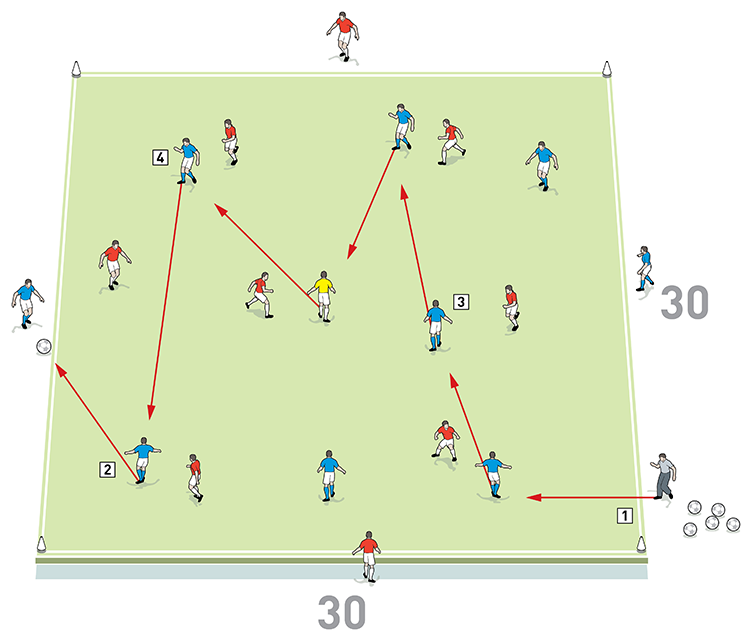
2. Part 2: The possession team must now string six passes together to score a point. Play two games of two minutes
3. Part 3: Now restrict players to one touch. Play two games of two minutes
4. Part 4: Make the final part directional, with teams working the ball across the area from one side to the other. Play two games of two minutes
Part 1: Start with free play in the main area, with the team on the ball passing to keep possession with the help of the floater and their two team mates outside the area if necessary. We play this for two minutes.
Part 2: We play as before but now teams are tasked with stringing six passes together to score a point. We play two games of two minutes each.
Part 3: We play as before but now the players are restricted to one touch. We play two games of two minutes each.
Part 4: We now make the play directional, with teams tasked with working the ball across the area from one of their outside players to the other to score a point. We play two games of two minutes each.
What do I get the players to do next?
Attacking overloads
We set up an area of 65x44 yards with a goal and a goalkeeper at each end and a five-yard zone across the centre of the pitch. We’re using 19 outfield players, split into two teams of nine and a floater. Each team has four defenders and a goalkeeper in one outside zone and five attackers in the opposite outside zone. The floater is a number 10 who starts in the central zone, playing for the team in possession. Players are locked into their zones.
Play starts with one of the goalkeepers, who passes out to his defenders. If the defenders use the floating number 10 to transfer the ball to their attackers, then the floater can follow the ball out of the central zone and join the attack, making it 6v4 in favour of the attackers. If he joins the attack, then one opposition attacker is allowed to make a recovery run across the central zone to track the floater. This would make it 6v5 in favour of the attacking team, as shown [2a].
2a
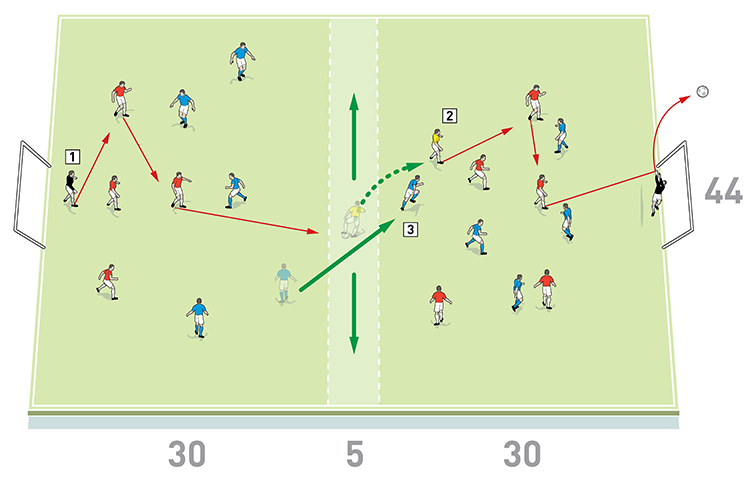
2. A floating number 10 starts in the central zone. If the defenders use him to transfer the ball to their five attackers, he can break out and join the attack, giving them a 6v4 overload
3. If the floater joins the attack, one opposition attacker can make a recovery run across the central zone to track the floater, making it 6v5
If a goal is scored or if the ball goes out of play, restarts are from the opposition goalkeeper. If the team in possession chooses not to use the floating number 10 and plays the ball through or over the central zone, then the floater remains locked in his zone and the attack progresses as a 5v4, as shown [2b].
2b
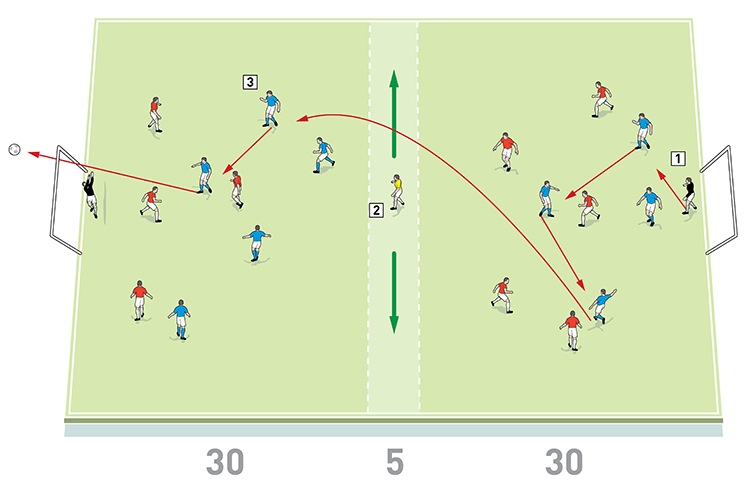
2. If the team in possession does not use the floating number 10 and plays the ball through or over the central zone, then the floater remains locked in
3. The attack progresses as a 5v4 in favour of the attacking team
We play for four blocks of five minutes. If needed we can progress this activity by imposing a minimum number of passes to be made before playing out of the defensive zone to encourage pressing by the opposition.
What are the key things to look out for?
We want to see players capable of identifying the out ball and playing to the floating number 10 under pressure. They should also know how to create the space to play out successfully and be aware of organising transition numbers.
Defensively, we want to see the nearest players pressing the ball quickly.
What are the typical mistakes players might make and how do I avoid them?
Players can sometimes overplay and take unnecessary risks or be caught ball-watching while attacking. If they take too many touches under pressure, they’re liable to surrender possession easily.
Related Files
Editor's Picks
Using the goalkeeper in build-up play
Pressing principles
Intensive boxes drill with goals
Penetrating the final third
Creating and finishing
My philosophy
Pressing initiation
Compact team movement
Defensive organisation
Coaches' Testimonials

Alan Pardew

Arsène Wenger

Brendan Rodgers

Carlos Carvalhal

José Mourinho

Jürgen Klopp

Pep Guardiola

Roy Hodgson

Sir Alex Ferguson

Steven Gerrard
Related
Coaches' Testimonials

Gerald Kearney, Downtown Las Vegas Soccer Club

Paul Butler, Florida, USA

Rick Shields, Springboro, USA

Tony Green, Pierrefonds Titans, Quebec, Canada
Join the world's leading coaches and managers and discover for yourself one of the best kept secrets in coaching. No other training tool on the planet is written or read by the calibre of names you’ll find in Elite Soccer.
In a recent survey 92% of subscribers said Elite Soccer makes them more confident, 89% said it makes them a more effective coach and 91% said it makes them more inspired.
Get Monthly Inspiration
All the latest techniques and approaches
Since 2010 Elite Soccer has given subscribers exclusive insight into the training ground practices of the world’s best coaches. Published in partnership with the League Managers Association we have unparalleled access to the leading lights in the English leagues, as well as a host of international managers.
Elite Soccer exclusively features sessions written by the coaches themselves. There are no observed sessions and no sessions “in the style of”, just first-hand advice delivered direct to you from the coach.
